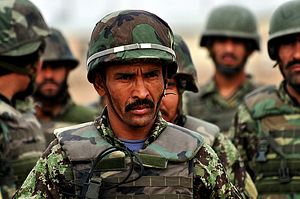The spillover effects of the NATO forces withdrawal from Afghanistan already has the Central Asian States of Tajikistan, Uzbekistan, Turkmenistan and Kyrgyzstan worried. Today, Afghan National Security Forces are fighting Chechen, Uzbek, Tajik and Kyrgyz extremists in its northern provinces, paying a heavy price in blood and treasure with very little acknowledgement from its Central Asian neighbors. Poor cross border security coordination and intelligence sharing mechanisms, a regional trust deficit, coupled with organized crime and drug trafficking have only exacerbated this problem.
Ties between Afghanistan and Central Asia are driven more by security imperatives than by trade and energy. Afghanistan and Central Asia share geographic, demographic, security and economic ties that go back to the ancient Silk Road days. With the disintegration of the former Soviet Union and the emergence of newly independent Central Asian states, Afghanistan began an era of tumultuous relations with Tajikistan, Uzbekistan and Turkmenistan. Following the 2001 NATO/U.S. intervention in Afghanistan, bilateral relations changed and a new dynamic emerged.
Many in Central Asia quietly welcomed the arrival of NATO forces at their gates as an alternative to Russia and China. They even benefited from billions of dollars in security, economic and trade deals to supply equipment and facilitate trade and supply routes to ISAF/NATO forces in the country. In the wake of the withdrawal of NATO forces from Afghanistan security ties weakened, trade and supply deals dried up, and extremism began to rise. Today more than ever Central Asian is in danger of outbreaks of extremism. Draconian policies adopted to suppress it have had the opposite effect.
With the start of operation Zarb-e-Azb in North and South Waziristan, many of the foreign fighters and terrorists who have been based for years with their families along the porous Afghanistan-Pakistan border left to find safe houses and training camps elsewhere. Some negotiated their way to northern Afghanistan. Many of these displaced fighters are now off to Central Asia, especially Tajikistan, Uzbekistan, Kyrgyzstan, and Turkmenistan, with some even going to China. That they have been able to do this is because Afghan forces with their NATO allies failed to secure Afghanistan’s borders in the wake of Zarb-e-Azb.
As a result, there are today active battlefields in the northern provinces of Konduz, Badakhshan, Baghlan, Faryab and Takhar, most of which happen to be either transit routes or provinces sharing a border with one or several Central Asian states or China. The key questions here are how did the geography of war all of sudden change from the southern provinces of Afghanistan – Kandahar, Nangahar, Oruzgan, Helmand, and Nimroz, among others – to the Northern provinces, what is the ultimate goal of these terrorists, and what does it mean for the national security of Central Asia, Russia and China?
Pressure Cooker
Central Asia is a pressure cooker, with poverty, authoritarian regimes, gross violations of human rights, and an increasingly radicalized youth due to a lack of religious freedom and opportunity. This has made many of the countries in the region fertile ground for recruitment by extremist groups. Recently, a Tajikistan special forces commander joined ISIS and recorded a video threatening attacks. The growing number of Tajik, Uzbek, Chechen, and Kyrgyz fighters on the battlefields of Afghanistan fighting for either ISIS or the Taliban underscores how dangerous and fluid the situation can get once extremists find safe havens and training grounds in Afghanistan’s northern provinces.
The Chinese and Russian national security establishments recognize the threat and are already in close contact with Afghan security and intelligence institutions. China and Russia are also working to address the challenge through the Shanghai Cooperation Organization (SCO). Afghan President Ashraf Ghani, addressing the SCO summit in Ufa recently, put it this way: “…we are fighting on behalf of the region in the world and in this fight we need to be joined by forceful and coherent action.” He further warned of the consequences of inaction “…China, India and Russia out of the big countries will be in harms way, but also all our other neighbors near and far.” It was a stark warning of the security threat that confronts the region.
In fact, Russia has been beefing up its security by renewing agreements for its bases along the Afghan border and investing in the border security forces of Central Asian states that neighbor Afghanistan. For instance, Russia renewed the arrangement for its military base in Tajikistan and pledged to invest $5 billion dollars into Tajik security forces. Similar arrangements have been reached with other states.
China has also been working with Afghan, Tajik and Pakistani intelligence agencies to address the security concerns created by the East Turkestan Islamic Movement in Xinjiang province.
Meanwhile, the rise of ISIS and its declaration of the creation of the province of Khorasan – ostensibly covering Afghanistan, Central Asia, and parts of Iran and Pakistan – has further complicated the security dynamics and calculations in the region. Numerous radicalized youth and battle hardened terrorists from Central Asia have now joined ISIS and are fighting Afghan National Security Forces in Afghanistan.
History has shown that simply trying to contain this threat and outsourcing security to Afghanistan will only backfire. The conflict in the northern provinces of Afghanistan is a shared responsibility. It is a war that Afghans are fighting on behalf of Tajiks, Uzbeks, Turkmens, Kazakhs, and Kyrgyz, at a huge financial and human cost.
Unless they want another FATA or Waziristan on their borders, Central Asian states must overcome the trust deficit that plagues the region and use bilateral and regional platforms to tackle the growing challenge of extremism. Fail to do so and the security, political and economic repercussions for the entire region could be severe.
Tamim Asey is an Advisor and Research Fellow at the Afghan Institute of Strategic Studies (AISS). He regularly advises the Afghan Government and writes in major national and international journals.

































